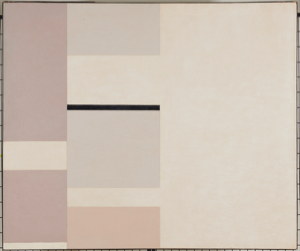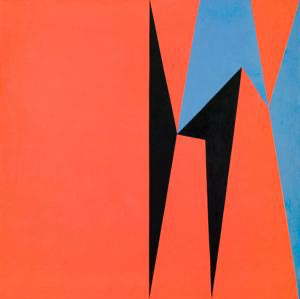| Showing 8 of 367 |
| FILTER RESULTS | × Close |

 by Artist (231)
by Artist (231)
Alan Bennett
2
Amadeo Gabino
1
Andrew Watson
2
Angelo Garzio
2
Antonio Prieto
5
Avra Leodas
1
Ban Kajitani
5
Barbara Moore
1
Beatrice Riese
1
Ben Berlin
1
Ben Krupka
1
Ben Owens
2
Berndt Friberg
4
Bill Ellis
1
Bob Flanagan
1
Bob Gardner
1
Brad A. Nebeker
1
Brad Adams
1
Brad Schwieger
3
Bror Utter
1
Byron Temple
1
Cameron
1
Caryl Wolstenholme
1
Catharine Hiersoux
1
Charles Benefiel
1
Charles Counts
3
Cheryl Laemmle
1
Chester Nealie
1
Christopher Staley
1
Claire Falkenstein
2
Claude Clark
1
Clay Spohn
1
Clayton Bailey
1
Dan Anderson
1
David Banga
1
David Cressey
2
David Dornan
1
David Ireland
1
David Kuraoka
1
David Shaner
6
Denis Phillips
1
Denny Howard
1
Don Martin
1
Don Potts
1
Don Reitz
1
Don Sheperd
1
Donald Louthian
1
Dora De Larios
1
Dorothy Bearnson
2
Dorothy Bowman
1
Dorre Stogner
1
Edith Roberson
1
Edna Romero
1
Elaine Coleman
1
Ellice T. Johnston
1
Elmer Taylor
2
Elzy J. Bird
1
Emerson Woelffer
2
Erle Loran
1
Ernest Briggs
1
Eunice Prieto
2
Evelyn Kramer
7
Everett Clark Thorpe
1
F. Carlton Ball
1
Fannie Nampeyo
1
Francis Colburn
1
Frank Boyden
2
Frank Kunishige
1
Franklin Williams
1
Frederick Kann
1
Gaell Lindstrom
2
Garry Uben
1
Gary Holt
1
George Chann
1
George Herms
1
George Stillman
1
Gladys Gray
1
Gordon Moore
1
Guy de Cointet
1
Harold Myers
1
Hassel Smith
1
Hayward King
1
Helen H. Deffebach
1
Helen Lundeberg
2
Henry Lin
1
Herb Shumacher
1
Hilda Deutsch Morris
1
Howard Warshaw
1
Ikuzi Teraki
1
J. William
1
Jacci Den Hartog
1
Jack Troy
1
James F. McKinnell
3
James Mahaffey
1
James Melchert
1
James W. Boynton
1
Jason Hess
2
Jeremy Jernegan
1
Jessie Larson
1
Joan Pearson Watkins
1
Joel Edwards
7
John Alan Nyberg
1
John Altoon
2
John Ferren
1
John McDowell
1
John McLaughlin
1
John Neely
6
John Norris
1
John Outterbridge
1
John Takehara
1
Jolyon Hofsted
1
Joseph A. Cain
1
Joseph Bennion
1
Joseph R. Zeller
1
Jules Engel
1
Julie E. Haramoto
1
June Wayne
1
Károly Fülöp
1
Kawai Kanjiro
2
Kazuye Suyematsu
1
Ken Scott
2
Kenneth Callahan
2
Knud Merrild
2
Larry Clark
1
Larry Elsner
7
Laura Andreson
3
Leonard Edmondson
1
Lillian Elliott
1
Loren Lukens
1
Louis Bunce
1
Lynn R. Munns
2
M.A. Peers
1
Madge Knight
1
Margaret Gutierrez
1
Margaret Tomkins
1
Marilyn Miller
1
Marion Hyde
1
Mark Bennion
1
Mary George
1
Mary Stevens
1
Masami Teraoka
1
Max Weber
1
Megan Williams
1
Mel Fowler
1
Michael David Hall
1
Moishe Smith
7
Mutsuo Yanagihara
1
Nan McKinnell
9
Narwin Sjoberg
1
Neil Estrick
1
Nolan Preece
1
Nora Eccles Treadwell Harrison
11
Otto Heino
4
Pat O'Neill
1
Patti Warashina
1
Paul Harris
1
Paul Soldner
2
Paul T. Roch
1
Peter Coussoulis
1
Peter Rudd
1
Phyllis Green
1
Pueblo Tencha
1
R. Douglas Fey
1
Regal China Corporation
2
Reuben Nakian
1
Richard Barlow
1
Richard Fairbanks
1
Richard Mahaffey
1
Richard Notkin
1
Richard Swanson
1
Rico Lebrun
1
Ritchie
1
Robert Bennett
2
Robert Brady
1
Robert C. Turner
2
Robert McChesney
1
Robert Piepenburg
1
Robert Winokur
1
Robin Vaccarino
1
Romilla Batra
1
Ron Hotek
2
Ron Meyers
1
Ron Taylor
1
Ronald Judd
7
Rose Cabat
3
Rose Naranjo
1
Roy De Forest
1
Sam Colburn
1
Sargent Johnson
1
Shasta Krueger
1
Shoji Hamada
1
Sibylle Szaggars Redford
1
Stan Beppu
1
Stanley Roberts
1
Stanton Macdonald-Wright
1
Stephen Howard Naegle
1
Stig Lindberg
1
Sumije Okoshi
1
Susan Harris
1
Suzanne Klotz
1
Svend Bayer
1
Sylvia Denys-Wenger
1
Ted Bidefield
1
Theodore M. Wassmer
2
Thomas A. Leek
1
Thongchai Yukantapornpong
1
Thornton Willis
1
Tim Ballingham
1
Tim Mather
1
Tom Coleman
1
Tony Nankervis
2
Toshiko Takaezu
2
Unknown
16
Unknown Chinese
1
Unknown Diné (Navajo)
2
Unknown Haudenosaunee
1
Unknown Hopi Pueblo
1
Unknown Japanese
1
Unknown Laguna Pueblo
1
Unknown Native American
1
Vernon Coykendall
2
Viola Frey
8
Wally Schwab
1
Warren MacKenzie
3
William Boman Sage
1
William Nelson Copley
1
William Sanderson
1
Woody Hughes
1
Yoshiro Ikeda
1
Yukio Yamamoto
1
Zulma Steele
1

 by Country (4)
by Country (4)

 by Object Type (46)
by Object Type (46)
{blank object type}
4
Adornment
1
Assemblage
1
Basket
3
Bead
1
Bottle
25
Bottle with stopper
1
Bowl
41
Box with lid
1
Casserole dish with lid
6
Ceramic
5
Chemigram
1
Collage
5
Compote bowl
2
Cookie jar with lid
1
Crock
2
Cup
18
Dish with lid
1
Drawing
32
Film
1
Goblet
1
Intaglio
9
Jar
22
Jar with lid
16
Jug
1
Olla
1
Painting
43
Paperweight
1
Pitcher
3
Planographic
2
Plaque
2
Plate
22
Platter
9
Pot
10
Print
1
Relief
2
Sculpture
18
Stencil
2
Study
1
Teapot
10
Textile
5
Urn
2
Vase
23
Vessel
7
Video
1
Wedding jar
1


